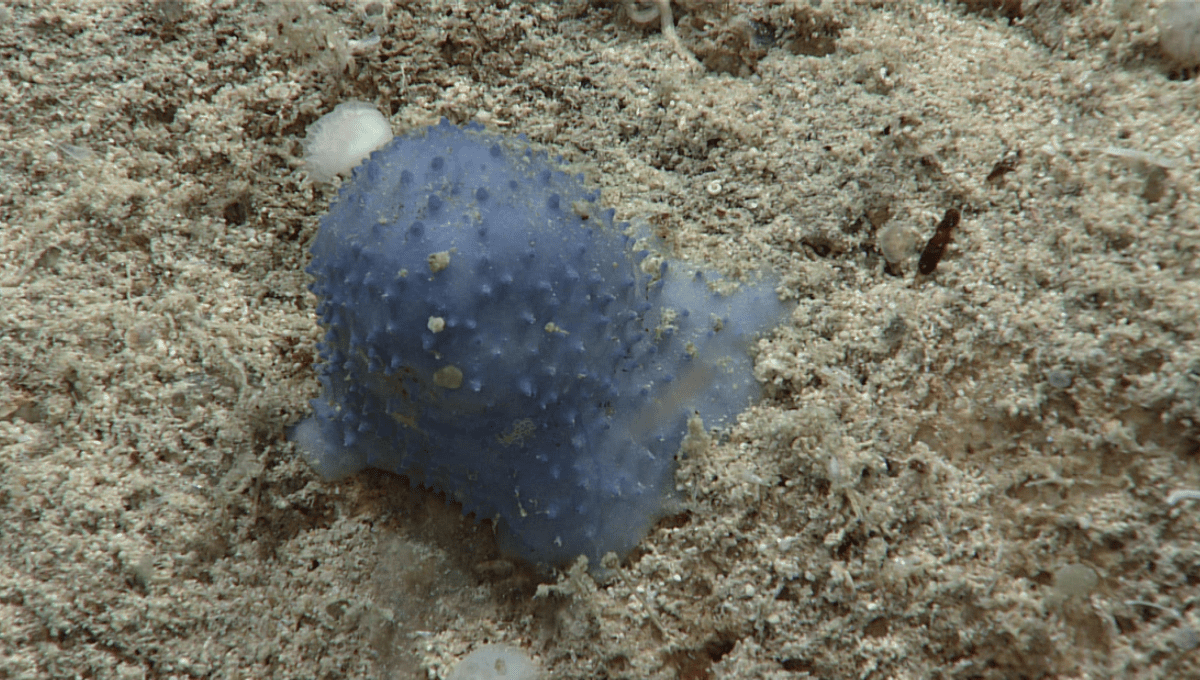
Some blue goo got scientists piloting a remote-operated vehicle (ROV) in the Caribbean Sea this year as they encountered a mysterious organism. The cerulean lump remains unidentified for now, but it’s suspected it could be some variety of soft coral, sponge, or tunicate.
“Have you heard about the latest #Okeanos mystery?” said National Oceanic and Atmospheric Administration (NOAA) Ocean Exploration in a post shared on Twitter. “Seen multiple times during off St. Croix, this “blue #goo” animal stumped scientists, who thought it might be soft coral, sponge, or tunicate (but def not a rock!).”
The bizarre blue goo was spotted during Dive 08 of the third Voyage to the Ridge 2022 expedition, said the NOAA on their website. The expedition took them to waters southwest of St. Croix in the Caribbean Sea where they observed the unidentified blue organism on several occasions.
Kitted out the color of acid-washed denim with a bobbly coat to compete with that of the rainbow sea slug, the “unidentified blue organism” is quite a sight.
“Okay we’ve now seen a number of these, and I think the mystery will remain until a sample can be collected,” one of the ROV operators can be heard saying in the video. “We’re still not sure and we all really like a good mystery.”
Likely culprits for the blue goo’s eventual ID are soft coral, sponge, or tunicate. Soft corals, such as Smurf polyps and Sansibia flava, would certainly indicate that this group of animals isn’t afraid of donning a little blue.
As for ocean sponges, Haliclona caerulea is a blue variety that’s also found in the Caribbean. Then you have tunicates such as salps (not forgetting Tethys vagina) and ascidians among which our blobby “blue biomat” would look right at home.
With so many options on the table, it was a relief to know one positive ID was off the table:
“I can tell you it’s not a rock.”
The NOAA’S Okeanos Explorer is no stranger to ocean oddities, and the scientists in the mystery blue goo video can be heard discussing how often it’s the case that they encounter at least one unidentified organism per dive. In the past, they’ve found starfish that look like ravioli as well as strange holes in the seabed that look as if they were dug out by humans.
For now, the mystery blue goo remains a UOO (unidentified ocean oddity), but what fun would deep sea exploration be without the occasional alien?
[H/T: CNET]
Source Link: Bizarre "Blue Goo" Found Lurking In The Ocean Has Marine Scientists Stumped